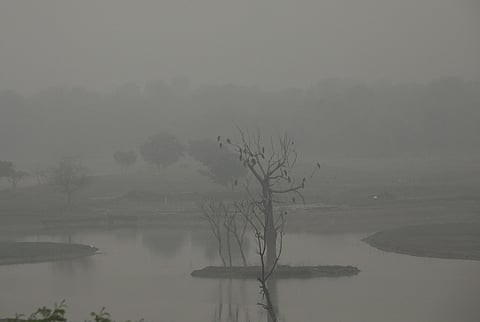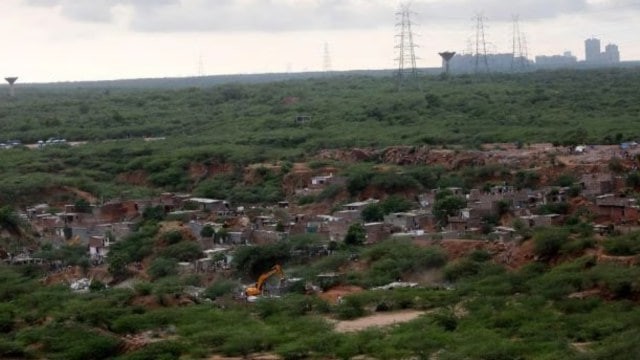




Disclaimer: Copyright infringement not intended.
The white-winged wood duck is the state bird of Assam and has been spotted in an artificial pond "Neelmoni Beel" at Nameri Tiger Reserve (NTR).
|
Common Name |
White-winged Duck or White-winged Wood Duck (Asarcornis scutulata) |
|
Alternative Name |
'Deo Hans' or Spirit Duck in Assamese |
|
State Bird |
Assam, India |
Distribution and Status |
|
|
Historical Range |
Northeast India and Southeast Asia. |
|
Current Range |
About 800 individuals remain, with approximately 450 living in India, Bangladesh, and Myanmar. |
|
In India |
Assam and Arunachal Pradesh. |
|
Protected Areas |
Dibru-Saikhowa National Park, Dihing-Patkai Wildlife Sanctuary, Nameri National Park, Namdapha National Park. |
Features |
|
|
Appearance |
Black body, white head heavily spotted with black, white-spotted wings, red or orange eyes. |
|
Size |
The average length of about 81 cm; male larger with more sheen. |
|
Activity Pattern |
Crepuscular (most active at dusk and dawn). |
|
Diet |
Omnivorous. |
Major Threats |
|
|
Habitat Loss |
Destruction, degradation, and disturbance of wetlands and pristine rainforests. |
|
Nesting Habitat Loss |
Loss of swampy areas with primary forests and large trees. |
|
Poaching |
Direct threats of bird and egg poaching. |
|
Conservation Status |
IUCN Red List: Endangered. |
Name |
Location |
Key Features |
Significance |
|
Kaziranga National Park |
Golaghat, Nagaon, and Sonitpur districts |
UNESCO World Heritage Site, home to the Great Indian One-Horned Rhinoceros. |
One of the most significant tiger habitats in India. |
|
Manas National Park |
Bongaigaon and Kokrajhar districts |
UNESCO World Heritage Site, a critical tiger reserve and an elephant habitat. |
Known for its rich biodiversity and wildlife conservation. |
|
Orang National Park |
Sonitpur district |
Home to the Indian One-Horned Rhinoceros and a variety of other wildlife species. |
Important for rhino conservation efforts. |
|
Pobitora Wildlife Sanctuary |
Morigaon district |
Known for the highest density of the Indian One-Horned Rhinoceros. |
Key site for rhino conservation. |
|
Nameri National Park |
Sonitpur district |
Diverse flora and fauna, including tigers, elephants, and a variety of bird species. |
Important bird-watching site. |
|
Dibru-Saikhowa National Park |
Dibrugarh and Tinsukia districts |
Unique wetland ecosystem, home to the White-winged Duck and several other endangered species. |
UNESCO World Heritage Site. |
|
Dehing Patkai Wildlife Sanctuary |
Dibrugarh and Tinsukia districts |
Known for its rich biodiversity, including the Red Panda and various bird species. |
Part of the Eastern Himalaya biodiversity hotspot. |
|
Raimona National Park |
Kokrajhar district |
Recently declared national park, part of the Bodoland Territorial Region. |
Focus on tiger and elephant conservation. |
READ ABOUT
Source:
|
PRACTICE QUESTION Q.Consider the following statements about White-winged Wood Ducks:
Which of the statements given above is/are incorrect? (a) 1 only (b) 2 only (c) Both 1 and 2 (d) Neither 1 nor 2 Answer: b Explanation: Statement 1 is correct: It is the state bird of the Indian state of Assam. In India, the key protected areas for the white-winged duck are Dibru-Saikhowa National Park, Dihing-Patkai Wildlife Sanctuary, Nameri National Park and Namdapha National Park. White-winged duck (Asarcornis scutulata), also known as “Deo hanh” in Assamese, was once widely distributed in Northeast India and Southeast Asia. Statement 2 is incorrect: Due to ongoing habitat loss, a small population size, and because this duck is hunted for food, eggs and pets, the white-winged duck is evaluated as Endangered on the IUCN Red List of Threatened Species. |







© 2025 iasgyan. All right reserved